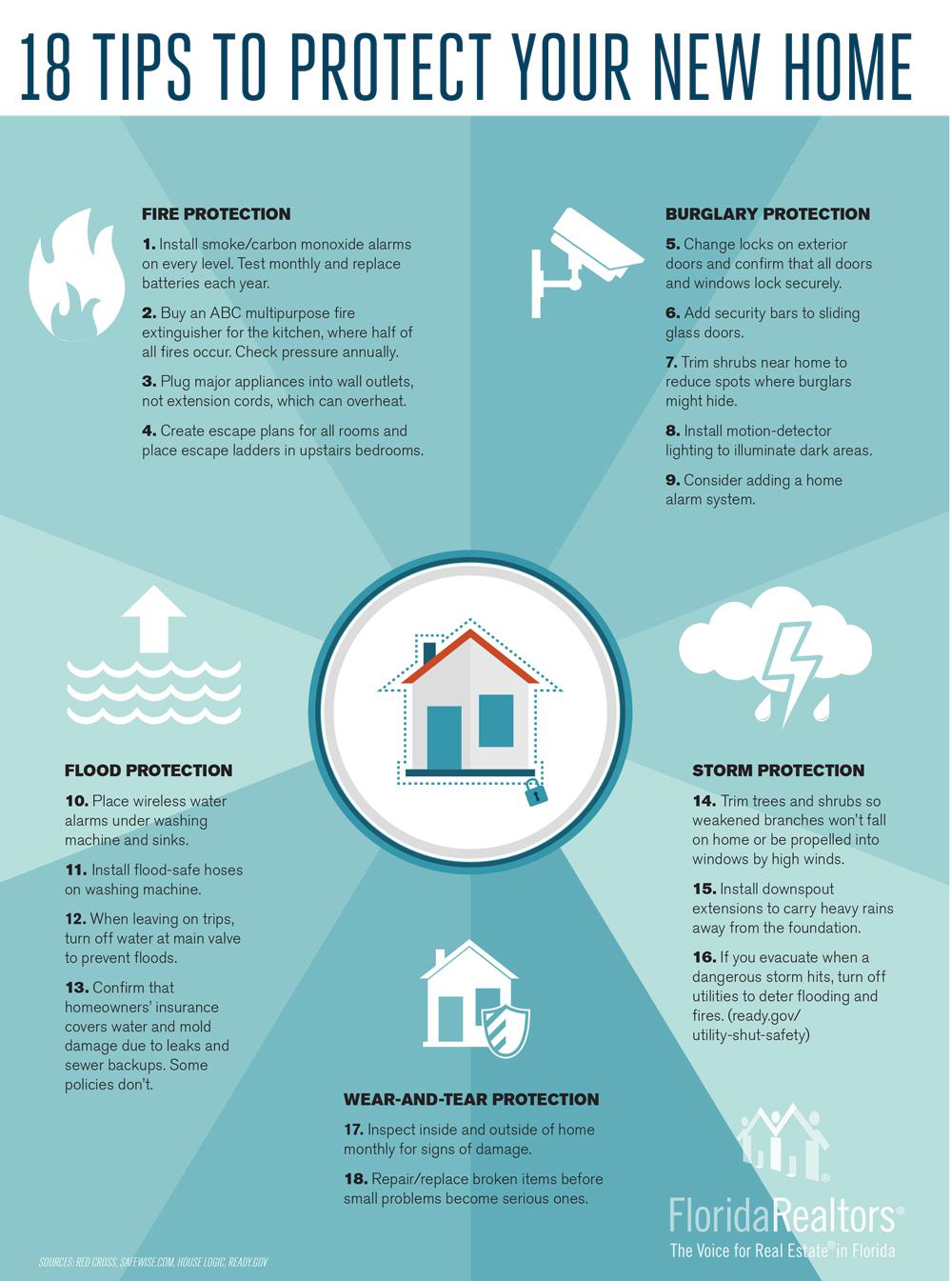Text Version:
FIRE PROTECTION
1. Install smoke/carbon monoxide alarms on every level. Test monthly and replace batteries each year.
2. Buy an A-B-C multipurpose fire extinguisher for the kitchen where half of all fires occur. Check pressure annually.
3. Plug major appliances into wall outlets, not extension cords, which can overheat.
4. Create escape plans for all rooms and place escape ladders in upstairs bedrooms.
BURGLARY PROTECTION
5. Change locks on exterior doors and confirm all doors and windows lock securely.
6. Add security bars to sliding glass doors.
7. Trim shrubs near home to reduce spots where burglars might hide.
8. Install motion-detector lighting to illuminate dark areas.
9. Consider adding a home alarm system.
FLOOD PROTECTION
10. Place wireless water alarms under washing machine and sinks.
11. Install flood-safe hoses on washing machine.
12. When leaving on trips, turn off water at main value to prevent floods.
13. Confirm homeowners insurance covers water and mold damage due to leaks and sewer backups. Some policies don’t.
STORM PROTECTION
14. Trim trees and shrubs so weakened branches won’t fall on home or be propelled into windows by high winds.
15. Install downspout extensions to carry heavy rains away from foundation.
16. If you evacuate when a dangerous storm hits, turn off utilities to deter flooding and fires. (See https://www.ready.gov/utility-shut-safety for advice.)
WEAR AND TEAR PROTECTION
17. Inspect inside and outside of home monthly for signs of damage.
18. Replace/replace broken items before small problems become serious ones.
Sources: Red Cross, SafeWise.com, House Logic, Ready.gov



